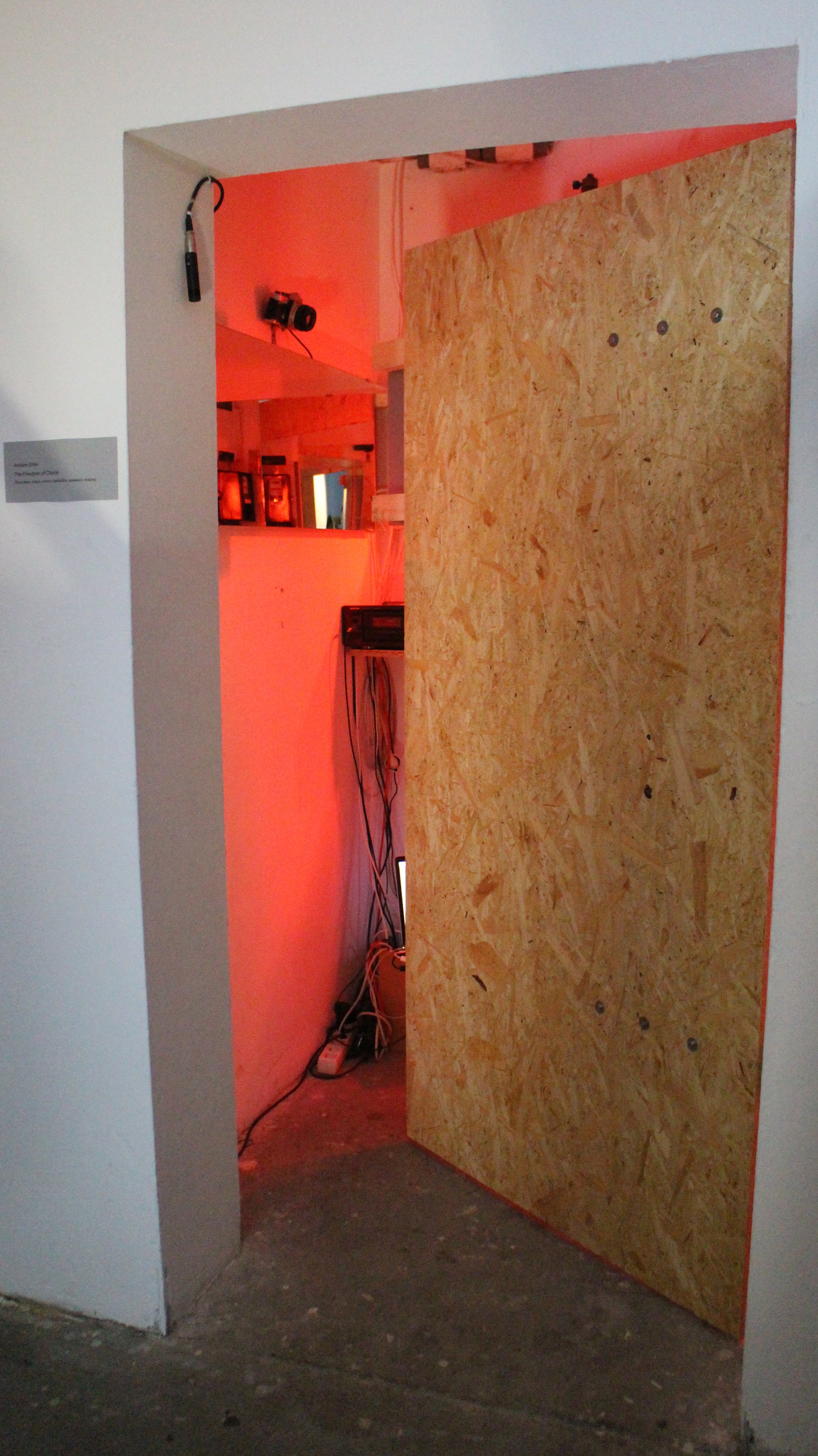The Freedom of Choice
Site Specific Sound Installation
Medium: Material: Wooden Structure, 4ch Audio, Mirrors
Amplified With Transducers, Microphones, Tape Deck,
Relays, Arduino Computer, Questionaire
Exhibition: A/Noesis,
Modular Space / Greenhouse, Berlin 2018
“Freedom… how strange today in our society, [how] the scope of what is possible and what is impossible is distributed. […] The intelligent dialectic of freedom is that systems [are] presenting us with a whole scope of formal freedoms, but the tricky thing is to see how many of these freedoms are empty freedoms, in the sense that formally you can do it, but really, the stability of the entire system is grounded in the idea that, really, you can not do it.”
Site Specific Sound Installation
Medium: Material: Wooden Structure, 4ch Audio, Mirrors
Medium: Material: Wooden Structure, 4ch Audio, Mirrors
Amplified With Transducers, Microphones, Tape Deck,
Relays, Arduino Computer, Questionaire
Exhibition: A/Noesis,
Modular Space / Greenhouse, Berlin 2018
- Slavoj Zizek, interviewed by Owen Jones for the Guardian, Oct 24 2018 (Youtube)
We are surrounded by what appears to be a constant stream of choices, most of them unimportant and of no influence in the grand scope of things. Still, choices make us feel included, interactive, free and independent – therefore choices are sold at a premium. But how much of a choice are actually the choices we are given rather than being pre-curated internal/discrete structures aimed to keep us from interfering with the important events in the world? And to what degree are we accomplices in this, our own confinement, when we actually keep allowing it to prevail?

The Freedom of Choice aims at questioning the fundaments on which we build our assessments, starting from the idea that choices and interactivity indeed cross-feed each other. Interactivity happens actively in our heads, not only towards an external agent. By assessing an experience towards earlier ones we verify and categorize it, thereby we actively filter incoming stimuli, so that we continuously can build coherent cause/effect chains of events and leave brain resources for new incoming tasks. But what lies behind these assessments, how do preconditioned connotations steer our judgement towards surrounding events? The plethora of choices and options often appear to exist primarily to boost and further resonate our self image and status, but evaporate like chimeras when put into context of the actual world around us.
Thus, The Freedom Of Choice works along three overlapping axises; the opaque concept of free choice just described, us humans’ inherent wish and need to interact with the world around us, and the variying expectation of consensus of said interactions, both internally and externally. By staging a row of seemingly random props and events, augmented by an immersive sound collage multiplying itself through overlapping buffered snippets randomly recorded from a micro controlled cassette deck, the visitor is invited to explore a fragmented timespace both claustrophobic and infinite, but where the infinity rather than stretching outwards, only is a self-reinfored implosive multiplication of themselves. The artwork puts into question our own agency within society, as well as towards ourselves, and wants to get the participants to reflect on the underlying intentions of their daily interactions.